The trip to Sri Lanka had been in the works for some time. A land of historical, cultural and spiritual significance, the tiny little island nation south of India is known for its mystique and beauty. I have been fascinated by and had visions in my mind of the place, having read accounts about it in scriptures, travelers’ journals and news stories. Arthur C Clarke the science fiction writer had made it home.
The opportunity presented itself in the form of a yatra (journey) conducted by the Desika Daya Trust, the brainchild of Dushyant Shridhar – scholar, speaker and harikatha exponent. A word about Dushyant. Not only is he an amazing repertoire of knowledge about ancient Indian scriptures (some obscure), he also delivers the stories in such a way that it appeals to different generations – young and old, to different geographies (with his fluency in multiple languages) and may I say, even to people of different faiths. He does it expertly by quoting references from current affairs, geopolitics, drawing parallels from science and pop culture, interspersed with funny anecdotes galore that leaves the audience mesmerized! I would have never imagined that I would hear a reference to Pink Floyd’s Comfortably Numb in a discourse on Ramayana but there it was, somehow he managed it!. And as I mentioned to him, he has this infinite, infectious energy to go through his crazy travel schedule giving discourses in cities around the world, opining on matters of faith in news media, conducting yatras, and authoring books.



Before I proceed, a cautionary note to readers of this post, considering they might be from different backgrounds with different levels of interest and proficiency in matters of faith and practice. This is by no means a scholarly treatment of subject matters such as places of spiritual interest and significance.

I am no expert on these topics but merely an inquisitive seeker. To that extent, this post is simply a report of things I saw and experienced and maybe my perspective. There have been hundreds and thousands of interpretations of ancient Indian scriptures after all. This is another tiny little addition to that corpus.
We flew into Colombo and drove inland to Sigiriya. The daily routine consisted of getting up early in the morning – around 4-4:30 am to get ready and participate for morning chanting, discourse, overview of the sites we will visit that day and a light breakfast (all meals made by cooks we took along with the group). This early start is in itself good conditioning and discipline for anyone!

The first full day started with a trip to Trincomalee , seaside town on the eastern edge of the island (it is interesting how you can go coast to coast basically in a day). The town is full of mythological significance with references in Mahabharata and Ramayana as well as being rich in more recent history. It is a place of worship to devotees of Lord Shiva, as it is on the same longitude as Mt Kailash, Shiva’s abode.
We started our journey back to the central part of the island back towards Sigiriya, stopping at Dambula Caves on the way, home to giant Buddha statues carved inside the caves in different positions and an an amazing ‘Golden Temple’. When you look at these creations, you always wonder how did ancient civilizations build such structures with little to no technology whatsoever, but yet with geometrical



precision, structural integrity and matchless beauty! The journeys continued next day with a visit to Polonnaruwa , site of ancient ruins of a well planned city (reminds one of Rome) and the impressive Sigiriya rock that is 591 ft high . King Kashyapa is supposed to have chosen Sigiriya as capital and built a palace on top of the rock. Climbing it itself is a feat of human endeavour and adventure let alone building a palace on top!




But once there on the top, it was an opportunity to admire the serene beauty, the sunset and for a moment of reflection.
There were a number of impromptu chantings, discourses and discussions during the trip, as we went from place to place, took breaks to relax, and sat in gardens by the countryside. Apart from the ancient temples, we also got to visit some recently constructed ones such as the Hanuman temple
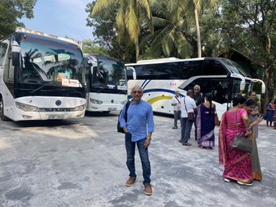
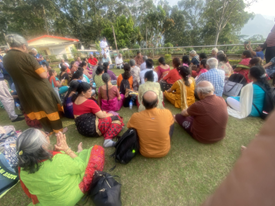
The highlight of the whole trip was the next day’s visit to Nuwara Eliya, the area and town with profound significance. In the Ramayana, this is the area where Ravana kept Sita in captivity after abducting her. Also known as Ashoka Vatica, there is a temple for Seetha at this place where
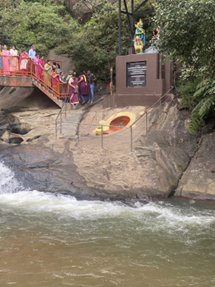
Hanuman presents the ring from Rama, to Seetha to introduce himself to her. We recited the relevant sections of the Sundara Kandam where this appears. For several of us that are regular readers of the epic with certain visions of the place, it was an emotional moment and gave us goosebumps. As Dushyant had said, of all the epics, Ramayana is supreme, and of all the sections in it, Sundara Kandam is most significant; and 80% of Sundara Kandam happens in Lanka and this spot is the holiest of them all! Ashoka Vatica is present day Hakgala Botanical Garden. The area is so beautiful that on a lighter note, if I was Seetha, I would have said to Rama after he won the war and rescued her – ‘Honey, thanks for freeing me. Now you go and coronate yourself and build a temple for yourself. I will just stay here and take care of things around here’!
A couple of interesting phenomena I observed at different places we visited, how the Buddhist faith was being followed and practiced with influences from Hindu rituals (somewhat different from how Buddhism is practiced in say Japan) and also how the two faiths co-existed, literally in places of worship with Buddhas on one side and Hindu figurines, paintings and statues on the other. This leads one to ponder how faith and practices evolve. Would our children and grandchildren be praying to digital avatars of deities and come up with their own deities and practices ?
Our next stop was at Nugathalawa, Welimeda where Seetha is supposed to have gone through Agni Pravesha (fire test) and come out unscathed. Women of all faiths come to this sacred spot as it symbolifies the power of womenhood.
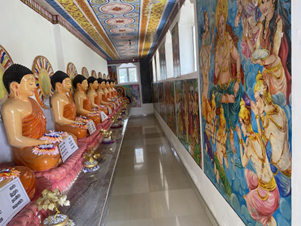
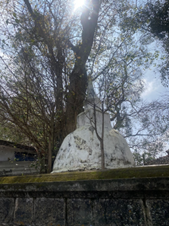
We visited the Hakgala Botanical Garden and visited a tea plantation in the rolling hills. Beauty all around.
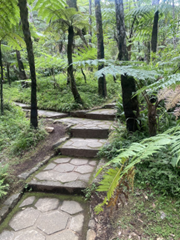
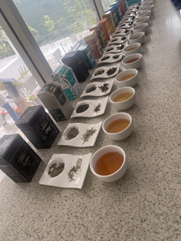
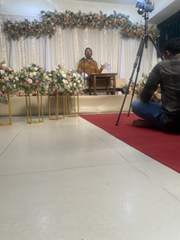
We then visited Kelaniya which is where Vibishana, brother of Ravana was supposed to have been crowned. Another site where Hindu and Buddhist pilgrims and practices co-exist literally side by side.
Our next and final stop was at the famous Tooth Relic temple where Buddha’s tooth relic is supposed to be preserved.
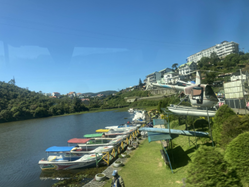
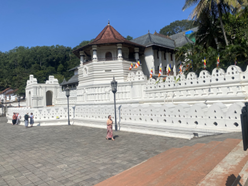
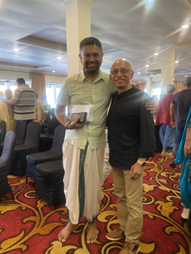
In a country that has gone through so much economic and political crises, it was heartening to see how beautiful the country still is, how clean it was, how things functioned well (but for a couple of minor glitches) and how nice the people are.
As an entrepreneur always looking for business lessons from any such adventure, it was validation that faith matters – whether it is a particular god, an idea, or a concept. Let us face it – as entrepreneurs we sometimes come up with some crazy ideas that defies logic and has no rationale. What makes it tick ? Faith.
There were other practical lessons as well as mentioned before – early rising, discipline of a routine and being calm under pressure (we had a few tense moments too with one of the buses breaking down at one point)
A great trip, wonderful experience and fond memories to cherish. Thanks for bringing Sundara Kandam to life Dushyant!
Leave a Reply